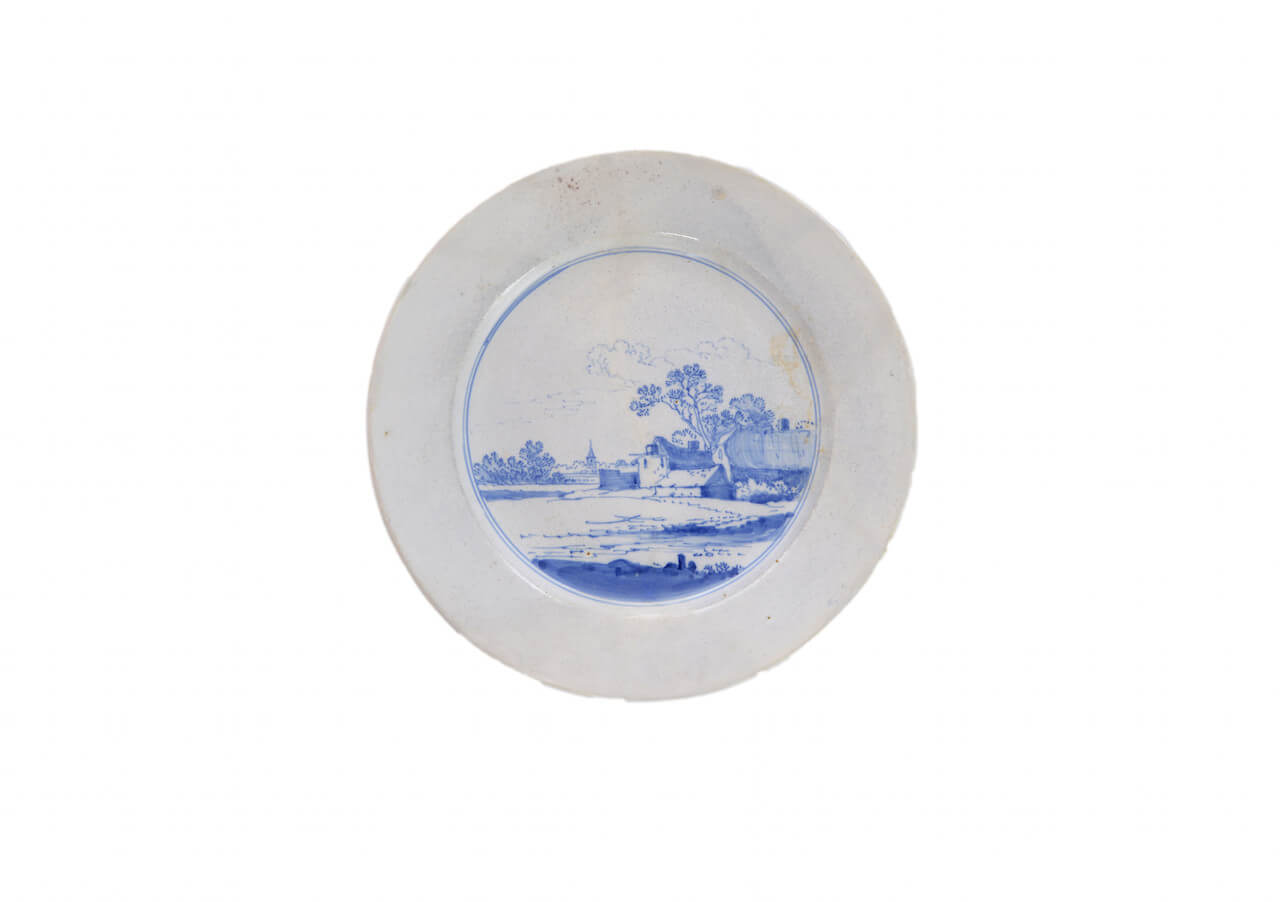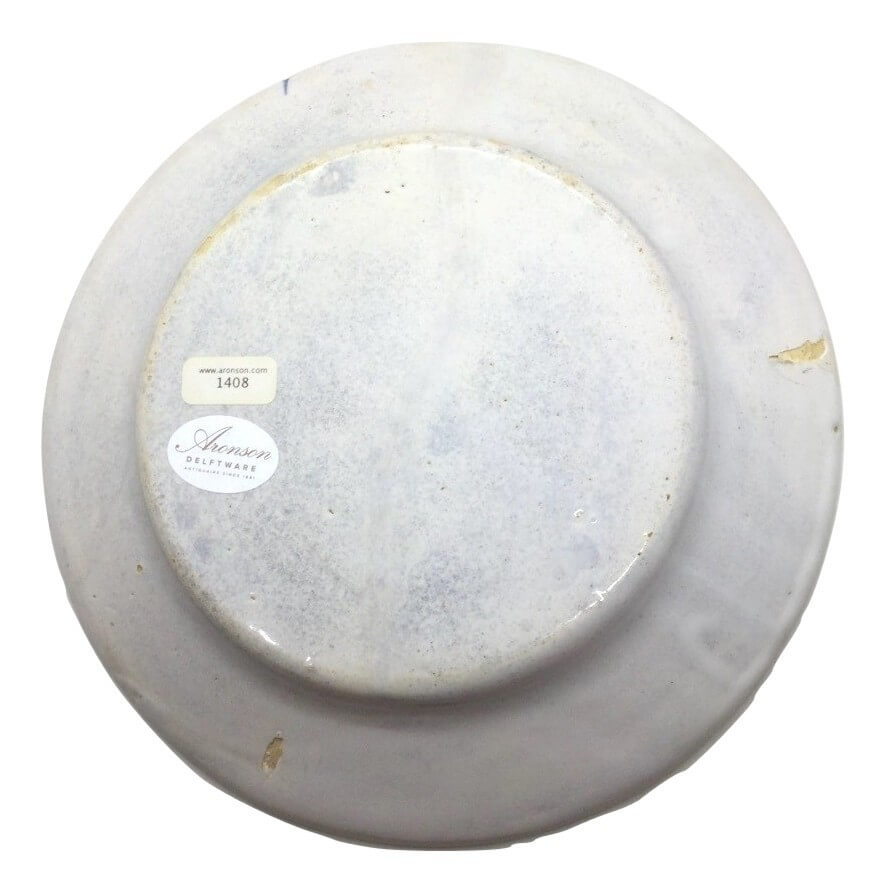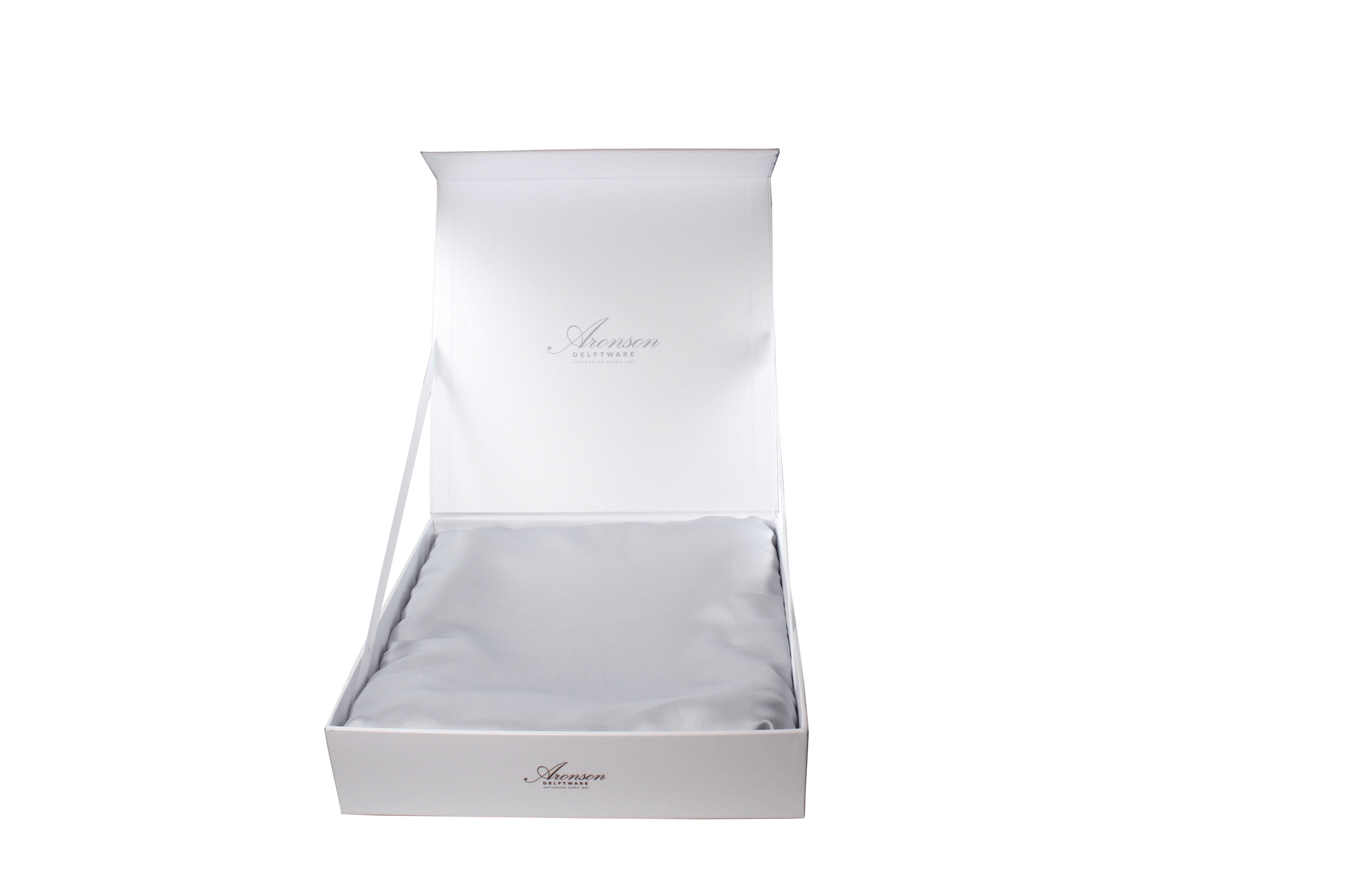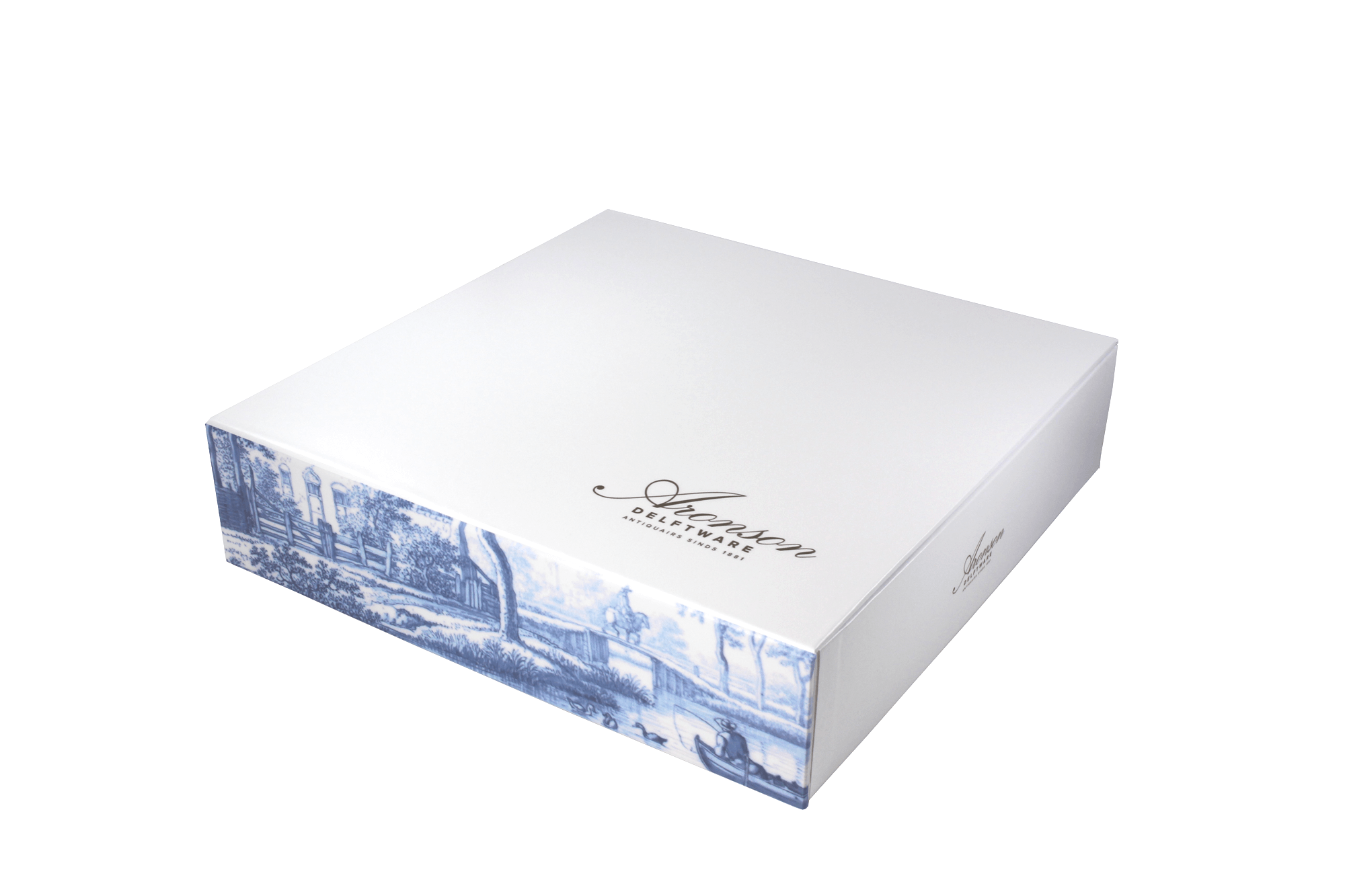D1408. Blue and White Plate
€4.500,00
Delft, circa 1660
Painted in an atmospheric style with a barn and other farm buildings amidst trees beyond a meadow, and in the distance a church steeple rising from a woods beneath cumulus clouds within a roundel of two concentric lines.
Attributed to Frederik van Frijtom (1632-1702)
Diameter
21.7 cm. (8.5 in.)
Out of stock
Description
Note
As with so many of the talented painters throughout the history of ceramics, most of the painters on Dutch Delftware are unknown because their work is unsigned and the available records refer almost exclusively to the factory owners. Frederik van Frijtom (1632-1702) is one of the rare exceptions, and his extraordinary oeuvre merits the acknowledgement he received during his lifetime and subsequently in the information available currently in the monograph by A. Vecht on the artist’s life and work. Van Frijtom is known to have painted not only on pottery but also on canvas in the style of Jacob Isaacksz. Van Ruisdael (Haarlem, 1628/9-1682, Amsterdam), and both occasionally are signed either with his initials or with his full name, as are two plaques signed and dated 1692, one depicting the Ouderkerk on the river IJssel, illustrated by Vecht 1968, pp. 48 and 88, no. 68, and the other depicting a wooded riverscape and illustrated ibid., pp. 41 and 88, no. 67.
In Van Aken-Fehmers 2001, p. 31, it is mentioned that there are several sources that suggest a link between Van Frijtom and a Delft factory, including an inventory list of Lambertus Cleffius, the owner of De Metaale Pot (The Metal Pot) Factory from 1679 to 1691, in which a Van Frijtom plaque is specified and a financial and working agreement between the artist and the factory is discussed, though his association with a factory may not have been exclusively with De Metaale Pot. Nevertheless, the arrangement is supported by the existence of a pair of oval plaques painted by Van Frijtom, marked LC for Lambertus Cleffius, currently in a private collection, illustrated in Vecht 1968, pp. 84 and 85, nos. 59 and 60; and in the Catalogue of The European Fine Art Fair (TEFAF) Maastricht, 2001, pp. 170 and 171.
While the signed plaques, as major works of art, provide documentary evidence of Van Frijtom’s style as a painter, it is his work on unsigned and unmarked pieces, including an important group of plates, that inspires controversy.
A pair of plates of this ilk is illustrated in Scholten 1993, p. 161, nos. 143 and 144, and on p. 160 the author comments: that the pair is among a “group of extremely carefully painted landscape plates,…which are linked directly with contemporary landscape prints by their compositional, technical and stylistic qualities. Vecht’s attribution of this group to the painter and pottery decorator Frederik van Frytom is untenable on stylistic grounds, among others. Frijtom’s influence can be traced, however, and the obvious inference is that one or more painters in Delft were responsible for the invention (and perhaps the execution) of the scenes. It is possible that a number of factories were involved in the production of high quality ware in this style. Some oval plaquettes bear the LC monogram of Lambertus Cleffius, … other pieces the initials MB, while plates from this group have also been excavated on the terrain of De Porceleyne Fles” (The Porcelain Bottle) Factory.
Vecht’s attribution, challenged by Scholten, does not seem unreasonable, however, based on the similarity to the signed plaques of both the painting style and the use of certain conventions on the group of plates illustrated in Vecht 1993, p.64, no.14 (a large plate, 39 cm. in diameter, in the Rijksmuseum, inv. no. BK-NM-3310, illustrated also in Van Dam 2004, p. 55, no. 26), and pp. 65-70, nos. 16-31: sixteen plates varying in diameter from 20.8 cm. (8 3/16 in.) to 39.2 cm. (15 7/16 in.), and largely in the Evenepoel Collection (nos. 130 A B, D and 131 A-G) at the Musées Royaux d’Art et d’Histoire, Brussels. With the plates illustrated by Vecht, the present plate shares the characteristic dark foreground, the atmospheric distance, and the masterful treatment of depth and perspective in the dark to light use of the paint. While perhaps not as detailed and developed as the examples illustrated, the present plate may represent the early work of Van Frijtom.
Condition
- Broken in several pieces
- Several chips from the rim missing
- Professionally restored
Included
Delivered in its custom box
Plate hanger and stand included
Additional information
| Weight | 2 kg |
|---|---|
| Dimensions | 35 × 35 × 10 cm |







